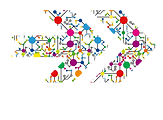LAB 1

MISSION
ArenAPoort, located in the Amsterdam Southeast borough (zone 6926), is committed to achieving energy neutrality by 2040, alongside the rest of the city. The current energy infrastructure is insufficient to meet this goal and will face congestion without the implementation of local flexible solutions. The greater challenge lies in creating an inclusive approach that equitably distributes the benefits among all stakeholders. This is the mission of LIFE.
VISION
The LIFE project envisions creating a district-scale energy management platform to address grid challenges while incorporating the interests of local stakeholders in both design and implementation. The LIFE project is being implemented with funding from the Ministry of Economy and Climate and the Ministry of Interior and Kingdom Relations. Funded by the MOOI 2020 subsidy from RVO, LIFE aims to achieve the following:
- Develop an energy trading platform for Zuidoost that reduces grid congestion and delivers energy savings to residents.
- Implement a user-centric design process for the LIFE platform that is replicable and scalable to other areas
- Establish a localized energy market consisting of energy prosumers – residents who both consume and produce local energy sources
Local energy community participation
The goal is to bring residents and businesses together to invest in local energy assets like solar power, battery storage, and vehicle-to-grid connections. In Venserpolder, many residents face challenging socio-economic conditions and often lack opportunities to be part of the energy transition. Through an inclusive approach, the LIFE project ensures their active involvement. Residents participate via the Energy Cooperative Venserpolder, while businesses engage through the Energy Hub Bijlmer-Noord, with Gemeente Amsterdam facilitating this collaborative effort to create a sustainable energy future.

Medium-term energy planning
Typically, energy planning is done by the grid operator. Net congestion has asked for a different approach in which different stakeholders have to optimize ernegy planning together. The aim of this part of the project is to create a Digital Twin (DT) mapping of Bijlmer Noord. Supported by detailed energy topology and insights in heating scenarios, this DT will analyze how different energy scenarios can be optimized in the area. The goal is to equip local stakeholders with tools to simulate and select the most effective energy strategies, balancing electricity and heat demands.

Short term net congestion
Short term net congestion reduction is about coordination of the energy system over a 48-hour time frame where supply and demand are matched. Due to congestion, other relevant parameters are added in besides supply and demand, such as flexibility of certain players in the network due to shortage in supply. This asks for new approaches, such as Power Flow calculations, flexible contracts, and more. LIFE serves as a practical and theoretical learning spot for these new approaches, supported by Spectral, the Johan Cruijff Arena and it’s battery to explore new paths in flexibility on the energy market, both technically and financially.
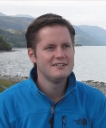
Shape the future of energy in Amsterdam-Zuidoost!
Whether you’re a resident, business-owner or employee, your participation is key to creating a sustainable energy future. Join the LIFE project to collaborate on local energy initiatives, from solar power to smart grid solutions, and help build a greener, more resilient neighborhood for everyone!
Local energy community participation
Collective participation to organize better sharing of energy and grid
In Venserpolder, the aim is to foster collaboration between residents and businesses for collective decisions on local energy investments, focusing on solar power, battery storage, and vehicle-to-grid technology. Residents engage through the Energy Cooperative Venserpolder, while businesses are involved via the Energy Hub Bijlmer-Noord, facilitated by the Gemeente Amsterdam.
Key Learnings
- Overcoming participation fatigue: Many residents are weary of projects that don’t offer tangible benefits. Successful engagement requires involving them in initiatives that directly impact their lives with measurable outcomes.
- Holistic approach to energy transition: Addressing the energy transition needs more than just technological solutions. Building strong collaborations and relationships among all stakeholders is crucial. This ensures a comprehensive strategy that integrates social dynamics with technical advancements.
- Data-driven decision making: Detailed analysis of energy use, costs, and grid congestion is vital for exploring effective collaboration. Data-driven insights help identify the most viable pathways for community involvement, aligning with local needs and capabilities.
- Need for institutional support: Energy community initiatives are complex, often overwhelming for individual residents. Institutions need to provide resources and knowledge to help manage these projects, making the transition process more accessible and meaningful for everyone involved.
Achievements in Venserpolder
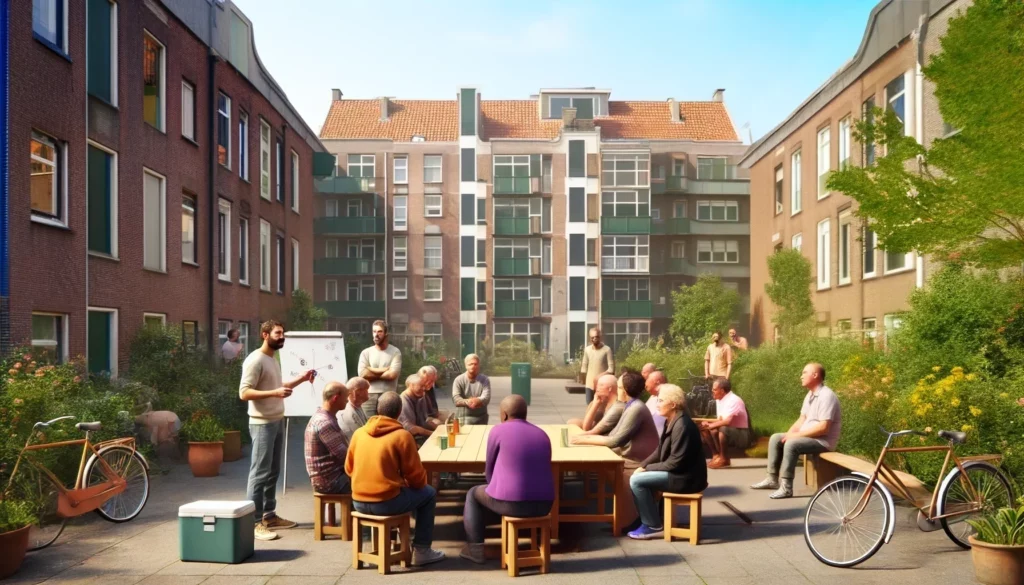
Partner contributions
- Spectral: Developed the business case for collective power management and flexible assets, laying the groundwork for local energy management.
- Johan Cruijff ArenA (JCA): Leads the local business energy hub, promoting collaboration between businesses and the community.
- TUD Design: Conducted ethnographic fieldwork and facilitated workshops to integrate social and technical perspectives into the LIFE roadmap.
- Utrecht University: Provided legal insights on district-scale energy management, including energy storage, electricity trading, and energy sharing.
- AMS Institute: Facilitated the business case for the Energy Hub, engaged local businesses, and evaluated ‘living lab’ cases.
- CoForce: Partnered with TUD and Utrecht University to engage residents in forming the local energy cooperative, ensuring community involvement.
Together, these partners are working towards a more inclusive and sustainable energy future for Venserpolder.
Medium-term energy planning
Evaluating and communicating future scenarios and opportunities
The medium-term energy planning in the Bijlmer-Noord region focuses on the use of Digital Twins (DT) to explore energy scenarios beyond what grid operators can typically handle. This involves collaboration with data from Alliander to evaluate scenarios such as district heating and the intergration of electrical and heating systems. The project aims to make companies and residents more independent in energy management by offering insights into the possibilities, like neighborhood batteries and shared energy capacities
Achievements in Venserpolder
- Digital Twin implementation: Developed a sophisticated DT for the Bijlmer-Noord region, enabling the simulation of various energy scenarios. This tool helps stakeholders understand the potential impact of neighborhood batteries and shared energy capacities.
- Scenario analysis and data integration: By collaborating with Alliander, the project integrated complex network data, including grid topology and transformer capacities. This allowed the evaluation of specific scenarios like district heating and the interaction between electricity and heating systems.
- Collaboration and testing: Initiated a dialogue among multiple parties, including social and technical stakeholders, to address energy planning challenges. This effort has led to testing batteries in the redispatch market and exploring business cases for energy storage.
Key learnings
- Complexity in data sharing: While data sharing using the Digital Twin is possible, it remains a challenge among partners juridically.
- Shift in energy planning dynamics: Traditionally managed by grid operators because there was no shortage in supply, energy planning has evolved into a multi-party dialogue now that congestion arises. This shift underscores the importance of stakeholder collaboration.
- Integrated Social and technical approach: Collaboration between social and technical stakeholders is essential. The project’s success relied on understanding community needs and aligning them with technological solutions.
- Empowering Intermediate Parties: The development and use of DTs demonstrates that intermediate parties can independently conduct network analyses. This independence can relieve pressure on grid operators and lead to more flexible, community-oriented energy solutions.
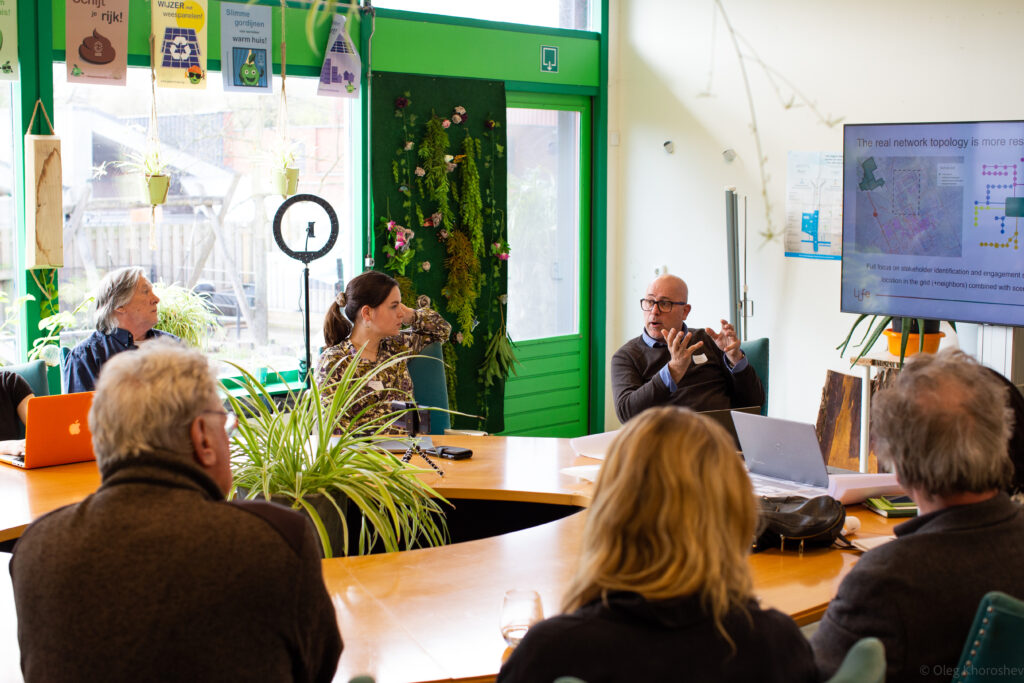
Contributions of the partners
- Spectral: Developed the business case for collective power management and flexible assets, exploring large-scale energy-sharing possibilities.
- TUD: Focused on the electrical system analysis and how Digital Twins (DT) can complement grid operators in managing electricity systems.
- EnerTrans: Analyzed district heating scenarios, providing profiles to evaluate the integration of electrical and heating systems.
- Alliander: Provided essential network data, including grid topology, transformer capacity, and interconnections between buildings.
- AMS Institute: Facilitated the business case for the Energy Hub and engaged stakeholders, evaluating ‘living lab’ cases.
- Johan Cruijff ArenA (JCA) and ING: Participated in an informative capacity, providing insights and data for analysis and learning.
Short term net congestion reduction
Monitoring, forecasting, and intervening a day/hour ahead
Key achievements
Key learnings
- Coordinating Complex Markets: Aligning different energy markets (in different timelines), such as the day-ahead and intraday domains, is crucial for effective congestion management.
- Technical Integration: A Digital Twin needs to have all grid properties in order to make useful calculations. This requires a high level of integration with grid operator systems.
- Data Sharing: While the DT tool is updated with the latest data for Bijlmer-Noord, developing a formal data-sharing protocol is critical for safeguarding privacy and facilitating collaboration with third parties.
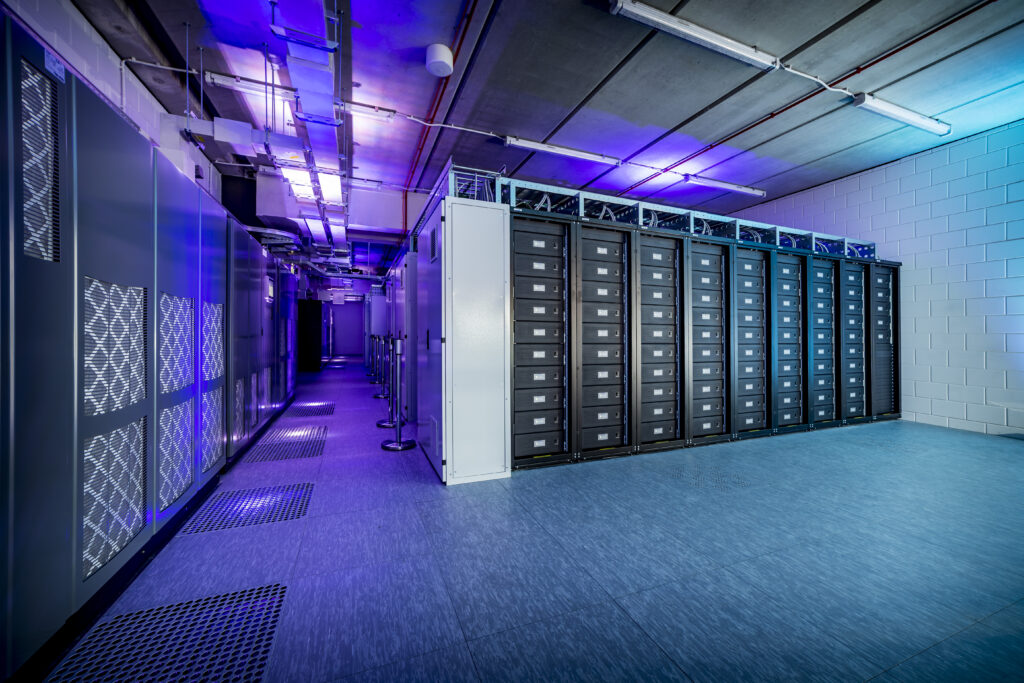
Partner and contributions
- TUDelft: Conducted advanced research and enhanced the Digital Twin tool for real-time grid analysis.
- Johan Cruijff ArenA (JCA): Participated in battery testing in the redispatch market, providing data to explore capacity and flexibility options.
- Alliander: Contributed essential network data, including the latest topology and trends, aiding in the refinement of the Digital Twin tool.
- AMS Institute: Facilitated stakeholder engagement and contributed insights to develop effective congestion management strategies.

